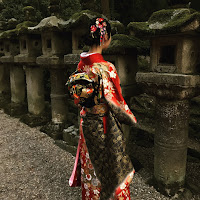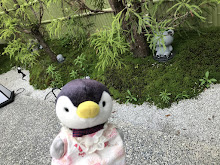☆OPEN HOURS☆ April to September: 6:00 a.m. to 6:00 p.m.
October to March: 6:30 a.m. to 5:00 p.m.
☆ADMISSION☆ For entering main hall JPY 500
History
Its history begins in the Nara era, when the capital was moved from Asuka to Heijo-kyo. Around 710, when the capital was relocated to Nara, in the hope of country's prosperity and the happiness of people, Takemikazuchi from Kashima Jingu was greeted at the summit of Mt. Mikasa. Approximately 50 years later, in 768, a shrine was built at the current location by the imperial sentence of Emperor Shotoku to pray for the protection of Heijo-kyo and the prosperity of the people. In the Heian period, the royal family and nobles often visited the Kasuga Taisha, and with the establishment of the remodeling every 20 years, the main shrines and other shrines became the current scale. The spread of belief has led to the creation of over 3,000 separate shrines throughout the country.
The first Torii Gate
Passing through Ichino Torii (the first torii gate), the straight approach path that was also used as a riding horse continues to Nino Torii (the second torii).
Enjoy checking the different patterns and shapes of the approximately 2,000 stone lanterns both side of the approach, which are important cultural properties.
After crossing Mabashi Bridge, you will find "Manyo Botanical Garden" on your left and "Ka-en" on your right.
As you go through the long approach, you will see a vivid red-painted shrine floating in a dark green cedar grove.
From Nino Torii, pass the "Fuji Torii" where white flowers bloom and wisteria. From the arrival, the approach will increase the slope and become a stone staircase. On the left is the south gate, which is the main entrance of the main shrine.
South Gate
The height of the south gate is 12m, and it is a magnificent gate of bright vermilion. There is a corridor surrounding the main hall. In the corridor, there are about 1,000 hanging lanterns. It is so fantastic when all lanterns are lit. Another highlight is the weeping cherry blossom, which is very beautiful when flowers hang over the lanterns and the gate.
Sunazuri wisteria
The Sunazuri wisteria, located on the left side of the south gate, is a long-standing famous tree that was said to have been dedicated in the Kamakura period, which is over 700 years old. Wisteria can be seen everywhere from April to May.
Main Hall
The Main Hall is a national treasure.
A few decades late after the first shrine was established, Emperor Shotoku built other three shrines to enshrine "Futunushi no Mikoto(the second shrine)", "Amenokoyane no Mikoto (the third shrine)" and "Himegami(the fourth shrine)".
Lanterns of Fujinaminoya
Fujinaminoya, an important cultural property at the end of the north corridor that surrounds the main shrine, has about 3,000 hanging lanterns dedicated from the Heian period to the present.
The lanterns of "Kasuga Taisha" are not only large in number but also important as historical data.
It is said that more than 60% of the existing lanterns before the Muromachi era are located in Kasuga Taisha.
There are hanging lanterns in the shrine and corridor, and stone lanterns on both sides of the approach. On the day of all lanterns (February 3rd / August 14th and 15th) are lit with a fire, it is so beautiful.
Shikinen Zotai (a transfer of a deity to a new shrine building)
Kasuga Taisha holds more than 2,200 festivals a year, and the highest ceremony is "Shikinen Zotai (ceremonial rebuilding)". The ceremonial rebuilding is not a relocation of the gods like the "Sengu (which is held in Ise Shrine)", but rebuilding or restoring without changing the position of the main shrine.It has been performed almost once every 20 years since its foundation.
Rebuilding the main shrine and renewing the Shinto treasure is an event that recognizes the preciousness of God and further conveys its existence to the next generation. It is an event to make God happy with the appreciation of everyday blessings.
Kasuga Taisha has been maintaining its beautiful and solemn appearance for more than 1,300 years because of the "Shikinen Zotai". The 60th year remodeling began at Ichino Torii in 2007, and completed in November 2016 with the "God's Transformation Festival" in which God is transferred from temporary housing to a newly renovated main shrine.






















No comments:
Post a Comment